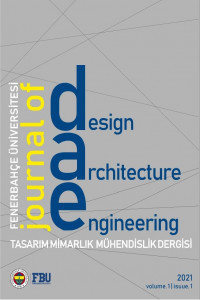YENİ NESİL VERİ GÜVENLİĞİ BAĞLAMINDA DAĞITIK SİSTEMLER ÜZERİNDE BLOCKCHAIN KULLANIMI VE BITCOIN UYGULAMASI
Bitcoin, 2008 yılında ortaya çıkan elektronik kripto para birimidir. 2009 yılında ilk Bitcoin’in tasarlanmasından günümüze kadar teknolojinin ilerlemesi ve halkın yoğun ilgisi ile hızlı bir gelişme göstermiştir. Uçtan Uca (Peer-to-Peer) bir mimariye sahip olan kripto paralar, bilgisayarlar üzerinde blok zinciri (Blockchain) yapısında tutulan bir teknoloji kullanmaktadır. Bu yapı, dağıtık (distributed) ve merkezi olmayan (decentralized) bir şekilde oluşturulmuştur. Bu nedenle, yapı üzerinde, verinin korunması ve bütünlüğü, hata payı, kullanıcı güvenliği incelemeyi gerektirmektedir. Bitcoin, bu 10 yıllık zaman diliminde yoğun ilgi görmüş ve kullanıcılar tarafından yatırım aracı olarak kabul edilmiştir. Bu da gelecek yıllarda da Bitcoin’in alt yapısını oluşturan blok zincirinin birçok alanda kullanılacağını göstermektedir. Bu araştırmada, Bitcoin’in tarihçesi, nasıl üretildiği ve satın alındığı, güvenliği, Bitcoin cüzdanı (wallet) ve blok zincir kavramları incelenerek güvenlik analizi gerçekleştirmek amaçlanmıştır.
Anahtar Kelimeler:
Bitcoin, Blockchain, Bitcoin Cüzdanı
USE OF BLOCKCHAIN ON DISTRIBUTGED SYSTEMS AND IMPLEMENTATION OF BITCOIN, IN THE CONTEXT OF DATA SECURITY
Bitcoin was first proposed in 2008 as a cryptocurrency. After the design of the first bitcoin in 2009, with the technological developments and intense public interest, it showed a fast improvement in its sector. Having a Peer–to–Peer infrastructure, cryptocurrencies use a technology named as Blockchain. This infrastructure has a distributed and decentralized nature. For this reason, protecting the data and its integrity, the margin of the error and protecting users must be investigated in detail. Bitcoin has drawn a big attention in this 10 year time period and has been used as investment tool. This also shows that being the infrastructure of bitcoin, blockchain is going to be used in many areas in the coming years. In this study, the history of bitcoin, how it is produced, bought, its security, bitcoin wallet and blockchain concepts are investigated and security analysis is conducted.
Keywords:
Bitcoin, Blockchain, Bitcoin Wallet,
___
- Ahamad, S., Nair, M., & Varghese, B. (2013, December). A survey on crypto currencies. In 4th International Conference on Advances in Computer Science, AETACS (pp. 42-48). Citeseer.
- Al-Rakhami, M. S., & Al-Mashari, M. (2021). A Blockchain-Based Trust Model for the Internet of Things Supply Chain Management. Sensors, 21(5), 1759.
- Ankalkoti, P., & Santhosh, S. G. (2017). A relative study on bitcoin mining. Imperial Journal of Interdisciplinary Research (IJIR), 3(5), 1757-1761.
- Barber, S., Boyen, X., Shi, E., & Uzun, E. (2012, February). Bitter to better—how to make bitcoin a better currency. In International conference on financial cryptography and data security (pp. 399-414). Springer, Berlin, Heidelberg.
- Bradbury, D. (2013). The problem with Bitcoin. Computer Fraud & Security, 2013(11), 5-8.
- Crosby, M., Pattanayak, P., Verma, S., & Kalyanaraman, V. (2016). Blockchain technology: Beyond bitcoin. Applied Innovation, 2(6-10), 71.
- Dev, J. A. (2014, May). Bitcoin mining acceleration and performance quantification. In 2014 IEEE 27th Canadian conference on electrical and computer engineering (CCECE) (pp. 1-6). IEEE.
- Durğay, Z., & Karaarslan, E. (2018). Blokzinciri Teknolojisinin E-Devlet Uygulamalarında Kullanımı: Ön İnceleme. Akademik Bilişim Konferansı, Karabük.
- Findikli, S., & Saygin, E. P. (2021). Müsteri Vatandaslik Baglaminda Taraftar Tokenlari. Third Sector Social Economic Review, 56(1), 57-71.
- Gültekin, Y., & Bulut, Y. (2016). Bitcoin ekonomisi: Bitcoin eko-sisteminden doğan yeni sektörler ve analizi. Adnan Menderes Üniversitesi Sosyal Bilimler Enstitüsü Dergisi, 3(3), 82-92.
- Hepkorucu, A., & Sevdanur, G. E. N. Ç. (2017). FİNANSAL VARLIK OLARAK BİTCOİN’İN İNCELENMESİ VE BİRİM KÖK YAPISI ÜZERİNE BİR UYGULAMA. Osmaniye Korkut Ata Üniversitesi İktisadi ve İdari Bilimler Fakültesi Dergisi, 1(2), 47-58.
- Hurlburt, G. F., & Bojanova, I. (2014). Bitcoin: benefit or curse?. It Professional, 16(3), 10-15.
- Jiang, S., Li, Y., Lu, Q., Hong, Y., Guan, D., Xiong, Y., & Wang, S. (2021). Policy assessments for the carbon emission flows and sustainability of Bitcoin blockchain operation in China. Nature communications, 12(1), 1-10.
- Maurer, B., Nelms, T. C., & Swartz, L. (2013). “When perhaps the real problem is money itself!”: the practical materiality of Bitcoin. Social semiotics, 23(2), 261-277.
- Karaarslan, E. Neden Herkes Blokzinciri Teknolojisini Konuşuyor?, http://dergi.bmo.org.tr/teknoloji/nedenherkes-blok-zinciri-teknolojisini-konusuyor, 2017.
- Kırbaş, İ. (2018). Blokzinciri teknolojisi ve yakın gelecekteki uygulama alanları. Mehmet Akif Ersoy Üniversitesi Fen Bilimleri Enstitüsü Dergisi, 9(1), 75-82.
- Krombholz, K., Judmayer, A., Gusenbauer, M., & Weippl, E. (2016, February). The other side of the coin: User experiences with bitcoin security and privacy. In International conference on financial cryptography and data security (pp. 555-580). Springer, Berlin, Heidelberg.
- Li, Z., Chen, L., & Dong, H. (2021). What are bitcoin market reactions to its-related events?. International Review of Economics & Finance, 73, 1-10.
- Nakamoto, S. (2019). Bitcoin: A peer-to-peer electronic cash system. Manubot.
- Rotman, S. (2014). Bitcoin versus electronic money.
- Signorini, M., Pontecorvi, M., Kanoun, W., & Di Pietro, R. (2020). BAD: a Blockchain Anomaly Detection solution. IEEE Access, 8, 173481-173490.
- Sönmez, F., Zontul, M., & Bülbül, Ş. (2015). Mevduat bankalarının karlılığının yapay sinir ağları ile tahmini: Bir yazılım modeli tasarımı. BDDK Bankacılık ve Finansal Piyasalar Dergisi, 9(1), 9-46.
- Sönmez, F., Zontul, M., Kaynar, O., & Tutar, H. (2018). Anomaly detection using data mining methods in it systems: a decision support application. Sakarya Üniversitesi Fen Bilimleri Enstitüsü Dergisi, 22(4), 1109-1123.
- Zhang, R., Zhang, G., Liu, L., Wang, C., & Wan, S. (2020). Anomaly detection in bitcoin information networks with multi-constrained meta path. Journal of Systems Architecture, 110, 101829.
- Yayın Aralığı: Yılda 2 Sayı
- Başlangıç: 2021
- Yayıncı: Fenerbahçe Üniversitesi
Sayıdaki Diğer Makaleler
Alparslan HORASAN, Turgut PURA, Ferdi SÖNMEZ
KÜRESEL SALGIN DÖNEMİNDE DEĞİŞEN SÜRDÜRÜLEBİLİR TEDARİK ZİNCİRİ YÖNETİMİ UYGULAMALARI
Damla Su KARADOĞAN, Saliha KARADAYI USTA
Anday TÜRKMEN, İsmail Emre KAVUT
ARTIRILMIŞ GERÇEKLİK (AG) UYGULAMALARI İLE VERİ TOPLAYARAK MÜZELERDE KULLANICI DENEYİMİNİ GELİŞTİRME
Halis YILMAZ, Lütfi APİLİOĞULLARI
ÖZGİRİŞİMLERİN BAŞARI FAKTÖRLERİNİN SENARYO PLANLAMA YAKLAŞIMI İLE İNCELENMESİ
